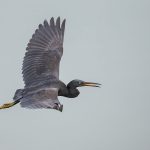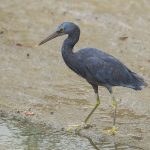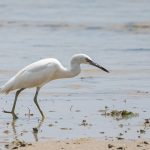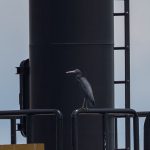The Asian Openbill is distinctive stork is found mainly in the Indian subcontinent and South-east Asia. There are a number of large breeding colonies in Thailand, Vietnam and Cambodia. In the Malay Peninsula, they have only been reported sporadically until recent times.
In early January 2013, a large flock of openbills were found at Kuala Gula in Perak. Subsequently, another flock was reported the next day at the paddy fields of Batang Tiga, Malacca. The southern movement of these large flocks of openbills was an exciting event for birders in Malaysia and Singapore. I personally made a journey to Batang Tiga in mid-January 2013 and found these birds in good numbers.
When these birds journeyed further southwards and started appearing in nearby Johore state, many in the birding community in Singapore started wondering aloud about the possibility of a few stray birds entering Singapore itself. Speculations abound as to the possible landing sites. So it was not unexpected that finally in 22 January 2013, a few were seen in the vicinity of Punggol Barat.
I co-authored a paper that has been published in NUS about the status of the Asian Openbills in Singapore with additional notes on foraging and dispersive movements. It can be found here.
I will like to present my account below of the search for them, written on 24 January 2013, the next day after my own discovery.






